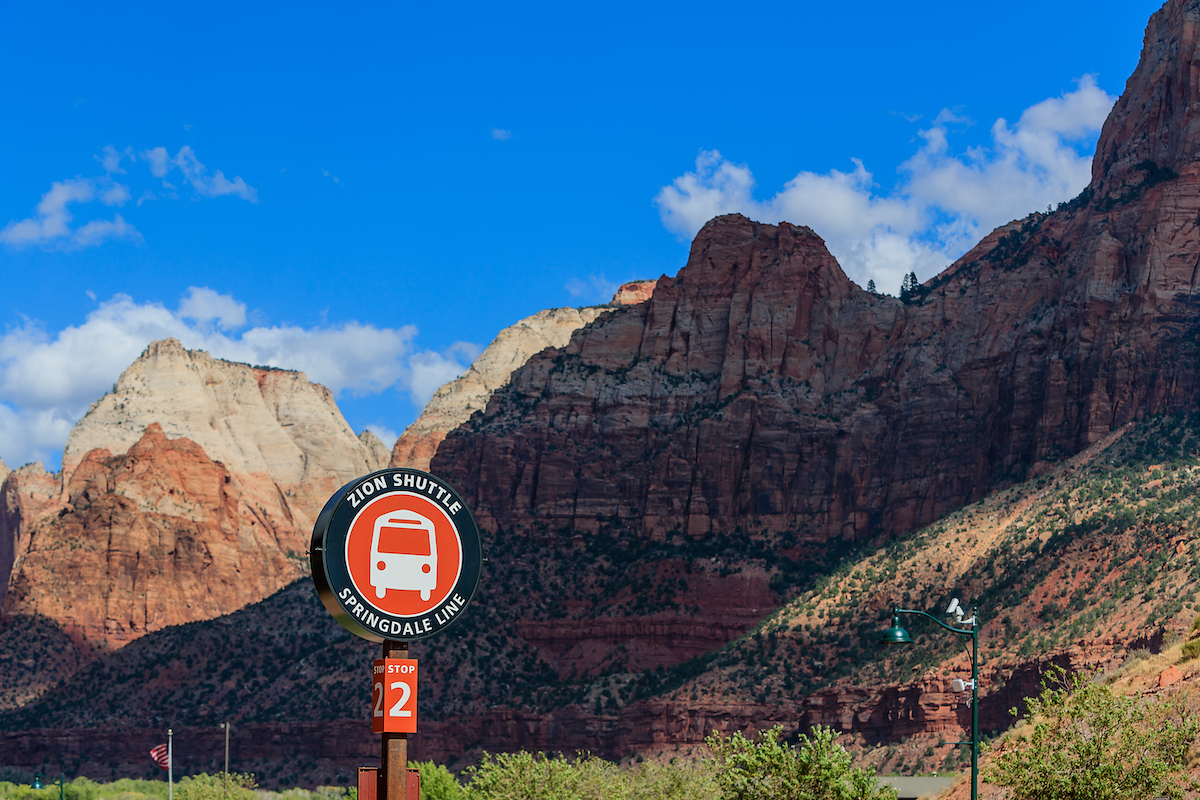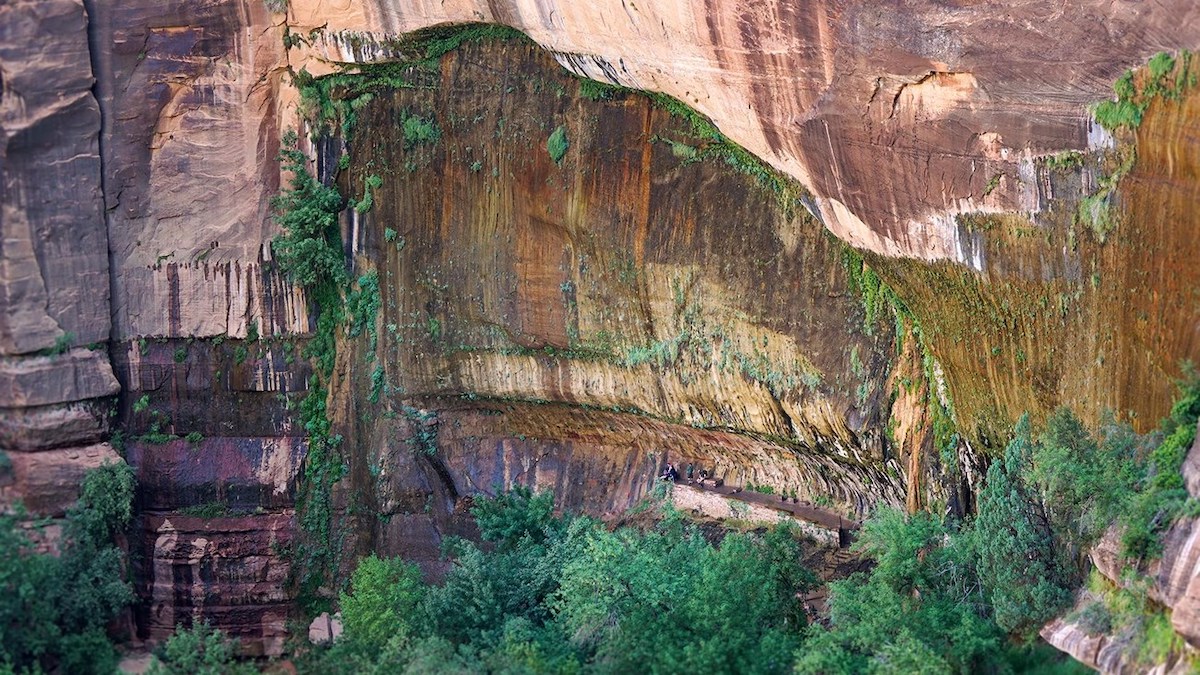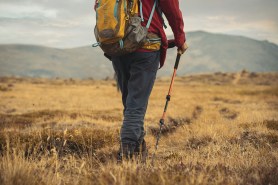

Zion National Park is spectacular. So spectacular, in fact, that millions of people visit it each and every year. The towering red sandstone cliffs within Zion are a perfect example of the stunning diversity within the U.S. National Parks.
Videos by Outdoors
You can go to Zion to challenge yourself with dangerous hikes or daring rock climbs, to wade through the Virgin River and shimmy between slot-canyon walls in the Narrows, or to simply take your time and gawk at the scenery. You can even just show up, hang out at the lodge, and ride the shuttle around.
Whether you’re a Zion-lover or a soon-to-be visitor, here are five things you may not have known about Zion National Park.
5. ‘Zion’ Isn’t Its Original Name

In 1909, President William Howard Taft established the Mukuntuweap National Monument to protect this canyon and its surrounding area. Mukuntuweap is the Paiute word for “straight canyon.” The Southern Paiute people were one of several indigenous tribes that lived in the Mukuntuweap/Zion area before European settlement in the 1800s. A Mormon pioneer built a homestead near the present-day Zion Lodge in 1863, which he called “Zion”—a biblical reference for a holy place in Jerusalem.
In 1918, Mukuntuweap National Monument was expanded from 15,840 acres to 76,800 acres and renamed Zion National Monument, and then it gained additional protections when it became Zion National Park—Utah’s first national park—in 1919.
4. There’s a Tunnel through a Mountain . . . With Windows

The Zion-Mt. Carmel Highway and Tunnel connects Zion National Park with the “Grand Loop,” which today includes Grand Canyon National Park and Bryce Canyon National Park. It took crews about three years to build, and the project’s most notable engineering feat was boring the 1.1-mile tunnel through a sandstone cliff to connect the east and west sides of the highway.
When you drive through this tunnel today (get a permit first if you have an oversized vehicle), you can enjoy the multiple “galleries” or windows that give drivers a peek out over Pine Creek Canyon. Those galleries were originally blasted into the cliff face to give crews access to the interior of the cliff as they slowly bored their way through the rock until the tunnel was complete. Crews also used the gallery windows as chutes for all the rock debris they created as they carved the tunnel.
3. It’s Home to the Scariest Hike in the United States

It’s a bold statement, because there are several contenders, but Angel’s Landing in Zion National Park just may be the scariest hike in the U.S. With 1,000-foot drop offs on either side, Angel’s Landing is so high, a minister who visited the park in 1916 remarked that only an angel could land up there. And yet, people hike there every day.
While some hikers say the trek is fine if you’re careful and the trail isn’t too crowded, others say the fact that the drop offs are in your line of sight for the final ascent (which has chains to help people keep their balance) makes it mentally tough. When the trail is crowded, some hikers add that it makes them feel extra anxious near those edges.
To reduce crowds and keep the trail as safe as possible, Zion National Park requires a permit to hike Angel’s Landing, and rangers do enforce this.
2. Shuttles and e-Bikes Are the Cool Ways to Get Around

Visit Zion National Park and you’ll notice that getting around there is a little different than you might expect. Zion was one of the first national parks to implement a shuttle system to help reduce traffic congestion and preserve both the experience and the natural environment. The shuttle is a convenient way to get around inside the park, with stops at trailheads and points of interest along the way.
Another way to get around is by e-bike. Rent an e-bike just outside the park entrance, and you can zip up the hill and from trailhead to trailhead on your own schedule. It’s a popular thing to do, and you’ll see numerous e-bikes parked in designated areas while their riders explore the trails.
1. It’s Home to a Great White Throne, A ‘Subway,’ and A Weeping Rock with Hanging Gardens

There are so many iconic sites in Zion, from the Emerald Pools to the Temple of Sinawava, the Hidden Arch, the Kolob Canyons, and beyond. Some other standout features of the park include the Great White Throne, a monolith rising 2,394 feet (730 meters) that is popular with rock climbers, the Subway (a lesser-known spot for hiking and technical canyoneering that requires a permit), and the Weeping Rock with its hanging gardens.
Water seeps through the sandstone cliffs at Weeping Rock, like tears, giving the cliff a “weeping” appearance. The water supports hanging gardens or colonies of plants that cling to the vertical walls of a cliff. (Remember, Zion National Park is in a desert, so this really is a site to see.)
Read more facts about the National Parks:
- Great Smoky Mountain National Park
- Rocky Mountain National Park
- Isle Royale National Park
- Big Bend National Park
- Zion National Park
- Voyageurs National Park
- Glacier National Park
- Joshua Tree National Park
- Grand Canyon National Park
- Dry Tortugas National Park
- Yosemite National Park










Pingback: Rangers Create Brutally Honest Signs at Zion National Park - Senderismo Total